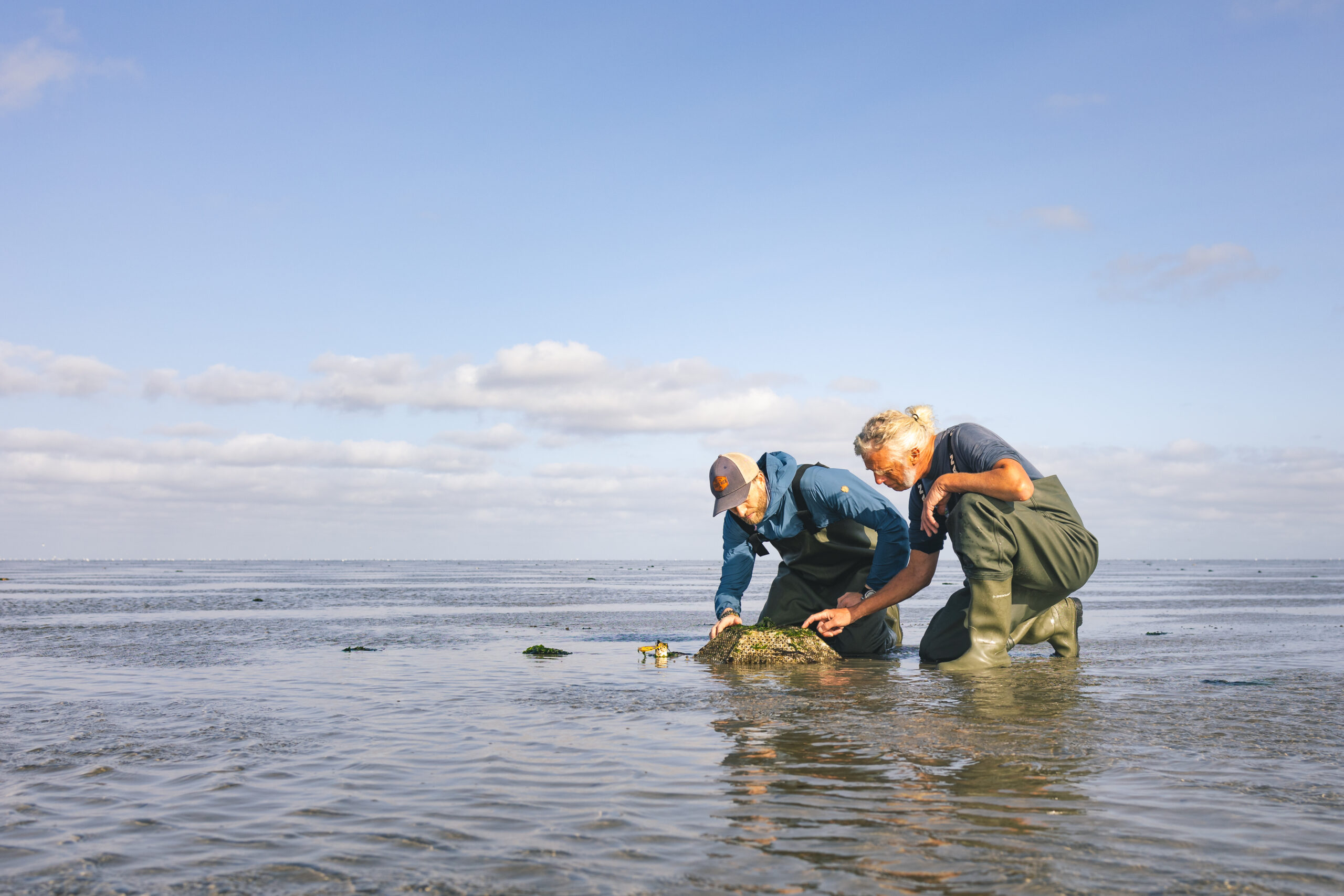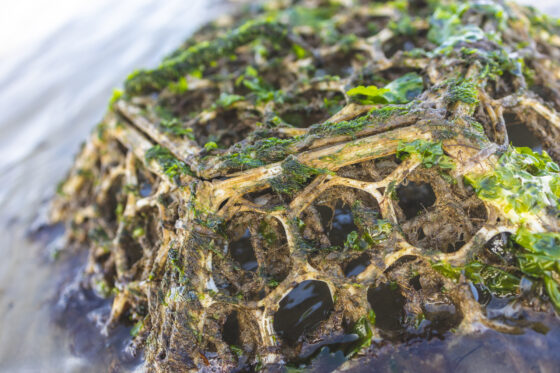Young mussels like Wadden Sea artificial “lampshade” reefs

Artificial mussel banks in the Wadden Sea are a good way of giving a quick boost to mussel growth, tests carried out by researchers at the sea research institute NIOZ have found.
“We are mimicking mature mossel banks, which have cavities to offer protection against predators such as shrimp, crabs and starfish. By clinging to the reef, young mussels have a better chance of surviving than on the sea floor. In the end the printed material is broken up and a natural mussel bank remains,” NIOZ researcher Tjisse van der Heide told broadcaster NOS.
Some 30 3D printed, biodegradable “lampshade” shaped reefs that were sunk off the coast of Texel in May have now been retrieved. More analysis of the reefs is needed, Van der Heide said, but it is already clear that young mussels have used the reefs, both those that were permanently submerged and those in tidal areas.
Mussels are important for biodiversity, filtering seawater and providing food for birds and marine life. “There are lots of worms and shellfish that bury into the the sandy seafloor. Mussels build their own seascape, which then become home to barnacles and sea anemones,” Van der Heide said.
According to European law, the number of mature mussel banks must increase. The infrastructure ministry, which is responsible for the Wadden Sea nature management, is in favour of more submerged mussel banks to also create a “robust and climate-proof eco system”, a spokesman told the broadcaster. Artificial reefs may be a quicker way of achieving this, he said.

Not everyone agrees with the plans. Current submerged mussel banks are relatively stable, said Wageningen University shellfish specialist Karin Troost, who has monitored the banks twice a year since 1992.
“There is a legal requirement to let existing banks mature but there is nothing to say that more mussel banks are needed,” she said. Troost is also doubtful about using artificial reefs to help the mussel population. “Why use non-natural materials to tamper with a natural area when there are plenty of hard surfaces for mussels to attach themselves to? Apart from that, the mussel population is self-sustaining.”
Van der Heide said an increase of mussel banks is important even when fishing for mussel seed, or young mussels will come to an end in 2029. “They are indeed stable at the moment but that can change. Without fishing there would be more but what we want to achieve are mussel banks the way they appear naturally in the Wadden Sea.”
Depending on the results of the analysis an adapted version of the reefs will be tested in the Wadden Sea next year.
Thank you for donating to DutchNews.nl.
We could not provide the Dutch News service, and keep it free of charge, without the generous support of our readers. Your donations allow us to report on issues you tell us matter, and provide you with a summary of the most important Dutch news each day.
Make a donation